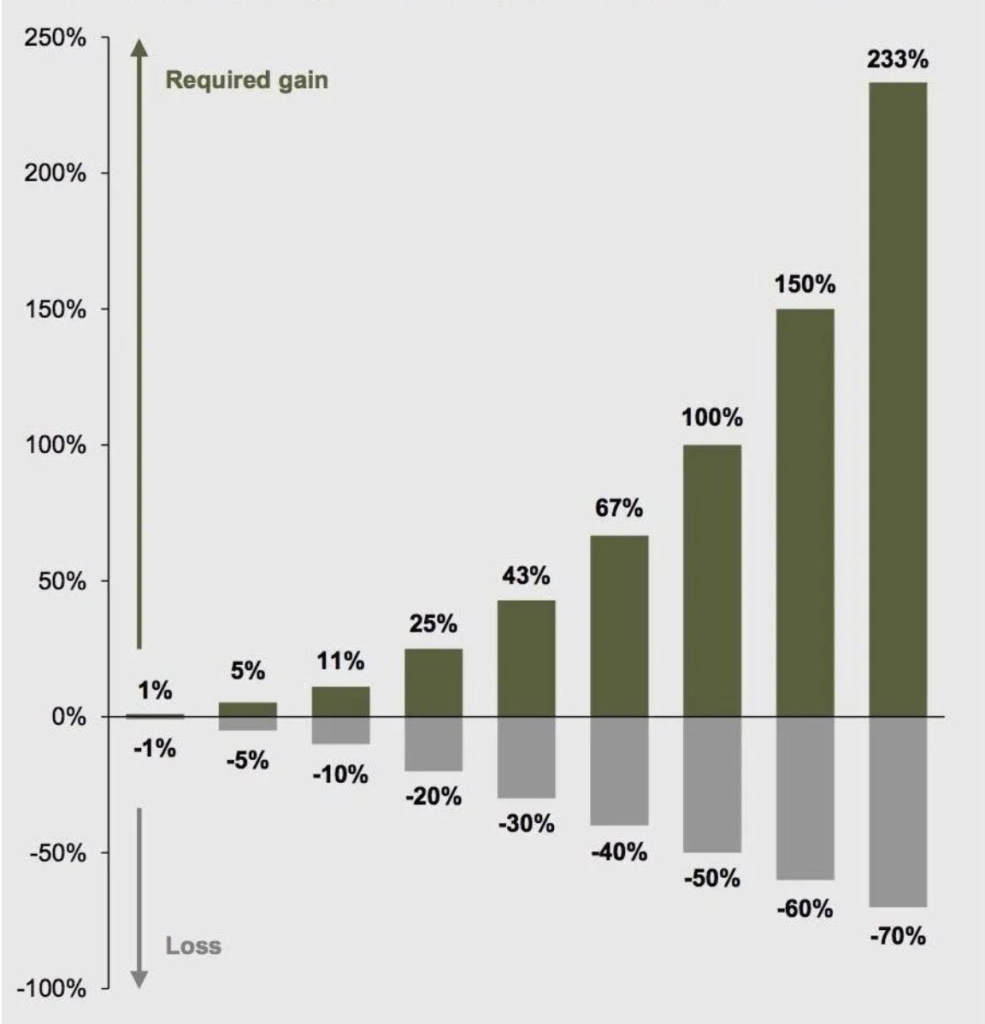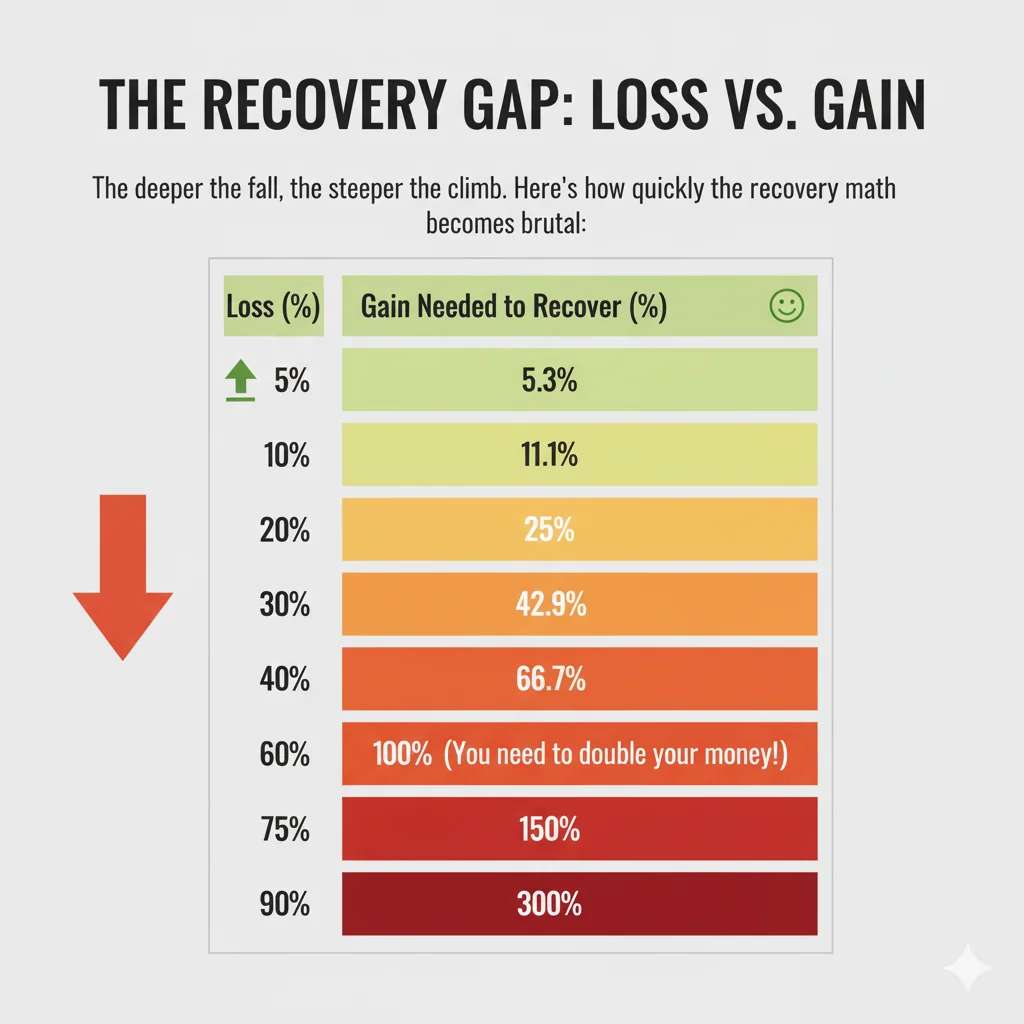Every investor in the Indian stock market — whether you’re a seasoned trader tracking the Nifty 50 or someone just starting a SIP — knows the sinking feeling of seeing red numbers in your portfolio.
During a market correction, it’s natural to think:
Unfortunately, that’s not how the math works.
This is one of the most common — and dangerous — misconceptions in investing. The mathematics of gains and losses is not symmetrical, and it quietly works against investors who don’t understand it.
Let’s unpack why this “market math trap” exists, and what it really means for your investment journey.

Table of Contents
The Core Problem: A Shrinking Base
The key reason behind this trap is simple — when your portfolio loses value, any future gain is calculated on a smaller base.
Your target (the original amount you invested) stays the same, but the money you have working for you has decreased.
Think of it like climbing out of a hole:
- A small dip is easy to recover from.
- But the deeper you fall, the harder it becomes to reach level ground again.
An Example from an Indian Investor’s Portfolio
Let’s take a simple example.
You invest ₹1,00,000 in a diversified portfolio of Indian equities. After a market correction, your portfolio drops 20%.
- Initial Investment: ₹1,00,000
- Loss (20%): ₹20,000
- New Portfolio Value: ₹80,000
- Now, to get back to your original ₹1,00,000, you need to recover ₹20,000.
But that ₹20,000 recovery must now come from your new base of ₹80,000, not ₹1,00,000.
So, the percentage gain required is:
That means a 20% loss requires a 25% gain to break even.
You must climb higher than you fell.
The Escalating Challenge of Deeper Losses
The deeper the fall, the steeper the climb. Here’s how quickly the recovery math becomes brutal:

The numbers are eye-opening.
A 50% loss doesn’t need a 50% gain — it needs a 100% gain.
Your portfolio must double just to get back to where you started
What This Means for Your Investment Strategy
Understanding this math isn’t about fearing market volatility — it’s about becoming a smarter, more disciplined investor.
Here are five key lessons every investor should take to heart.
Capital Preservation Is the Real Hero
Legendary investor Warren Buffett put it best:
Avoiding big losses is far more powerful than chasing big returns. Protecting your capital ensures you don’t fall into a hole that takes years to climb out of.
Beware of Panic Selling
When markets fall sharply, the urge to sell and “cut your losses” is strong. But panic selling locks in your loss — making recovery much harder.
If your investments are fundamentally strong, holding through downturns often pays off when the market recovers.
Use Stop-Losses Wisely
For traders and short-term investors, a stop-loss (an automatic sell order at a preset price) can be your best friend.
A controlled 10% loss (needing just an 11% gain to recover) is far better than a 50% collapse that requires doubling your capital to break even.
Diversify to Cushion the Blows
Diversification — spreading investments across sectors and asset classes — acts like a financial seatbelt.
When one sector (say IT) faces a downturn, another (like FMCG or Energy) can help offset losses, keeping your portfolio more stable.
Final Thoughts
The stock market is a remarkable engine for long-term wealth creation — but it runs on the cold, exact logic of mathematics.
By understanding the asymmetry between gains and losses, you can move from simply chasing returns to intelligently managing risk.
So, the next time your portfolio dips into the red, don’t panic. Remember the math, stay disciplined, and focus on protecting your capital.
Because in investing, the journey back is always steeper than the fall.


